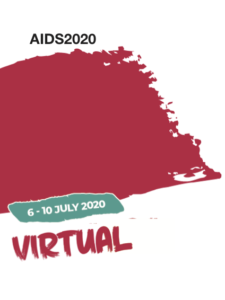Pregnancy meta-analysis: dolutegravir- versus efavirenz-based ART
22 July 2020. Related: Conference reports, Pregnancy, World AIDS 23 Virtual 2020.
 Polly Clayden, HIV i-Base
Polly Clayden, HIV i-Base
A meta-analysis of dolutegravir (DTG)- versus efavirenz (EFV)-based ART in pregnancy did not find a significant difference between rates of vertical transmission between treatments – according to data presented at AIDS 2020.
Preterm births and viral suppression rates were the only endpoints with a significant difference.
The analysis included the following five trials: DolPHIN-1, DOLPHIN-2, IMPAACT 2010, ADVANCE and NAMSAL. These provided a sample of 1074 pregnant women.
Timing of ART varied across the studies, from late presenters in DolPHIN 1 and 2 to women already receiving treatment at conception in NAMSAL and ADVANCE. Women in VESTED, that provided the largest number of cases in this analysis, were enrolled in the second and third trimesters. See Table 1.
Table 1: Meta-analysis of five clinical trials in 1074 pregnant women
| Study | Regimens | ART | Countries | DTG arm | EFV arm |
| DolPHIN 1 | TDF/XTC/DTG vs TDF/XTC/EFV | 3rd trimester | South Africa, Uganda | 29 | 31 |
| DolPHIN 2 | TDF/XTC/DTG vs TDF/XTC/EFV | 3rd trimester | South Africa, Uganda | 137 | 131 |
| NAMSAL | TDF/3TC/DTG vs TDF/3TC/EFV | From conception | Cameroon | 13 | 12 |
| ADVANCE | TAF/FTC/DTG vs TDF/FTC/DTG vs TDF/FTC/EFV | From conception | South Africa | 26 (+ TAF)
25 (+ TDF) |
30 |
| VESTED
(IMPAACT 2010) |
TAF/FTC/DTG vs TDF/FTC/DTG vs TDF/FTC/EFV | 2nd/3rd trimester | Botswana, Brazil, India, South Africa, Tanzania, Thailand, USA, Zimbabwe | 216 (+TAF)
213 (+TDF) |
211 |
DolPHIN 1 and 2 and ADVANCE defined viral suppression as less than 50 copies/mL and in VESTED this was defined as less than 200 copies/mL. NAMSAL did not provide viral load results for pregnant women.
Overall DTG was associated with significantly higher rates of viral suppression compared with EFV: OR: 2.90 (95% CI 1.54 to 5.46), p=0.001.
This difference was particularly notable in the studies with shorter duration of treatment: DolPHIN-1 69% vs 39%, p=0.02; DolPHIN-2 74% vs 43%, p<0.00001 and VESTED 98% vs 91%, p=0.0008, for the DTG and EFV arms respectively.
In ADVANCE, where women had been taking ART for as much as two years before conception, this difference was non-significant.
Although there was no significant difference between arms, the three cases of vertical transmission in DolPHIN-1 and two in VESTED occurred in the DTG arms.
The risk of preterm births was 4% higher in women receiving EFV: 8% vs 12%, p=0.04.
comment
Although the study authors explain it was an unexpected finding that faster virological suppression with DTG did not translate to lower vertical transmission, in DolPHIN 2 the three transmissions in the DTG arm were considered likely to be in utero as ART was started very late and the women had low viral loads at delivery.
The authors rightly point out that longer term safety considerations, especially the impact of weight gain on women’s health and pregnancy outcomes, need continual assessment. People with HIV are likely to take ART for many years and more and more women will conceive in pregnancy after several years on ART.
Reference
Asif SFet al. Faster virological suppression with dolutegravir versus efavirenz in pregnancy does not lower the risk of HIV mother-to-child-transmission: A meta-analysis of 5 clinical trials in 1074 pregnant women. AIDS 2020 virtual. 6–10 July 2020.Oral abstract OABLB0105.
https://cattendee.abstractsonline.com/meeting/9289/presentation/39

